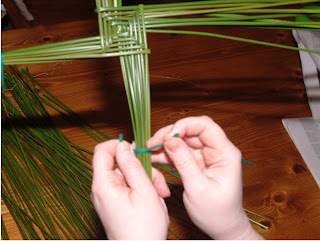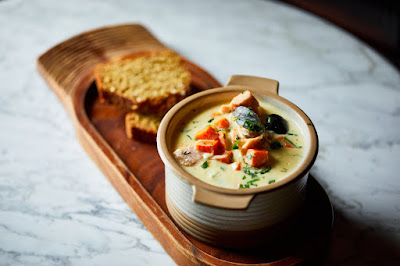The pudding is dark and can be saturated with whiskey or brandy, dark beer, or other alcohols. They used to be boiled in a "pudding cloth," but today they are usually made in pudding bowls.
Ready-made and cooked puddings are available in the shops but they will never compete with the pleasure that comes with making your own Christmas Pudding!
So, here's my easy to make Christmas Pudding recipe with a whiskey (or brandy) custard cream too!
 |
| It sounds like a lot of work - but the Christmas Pudding is very easy to make! |
2. Whisk the eggs, stout, whiskey or brandy and black treacle together and stir into the mixture.
3. Cover and leave to stand overnight in a cool place.
4. Butter three x 600ml pudding bowls and put a circle of grease-proof paper in the base.
5. Pack the mixture into the bowls and smooth the top. Leave about 2.5 cm space to the top of the bowl.
7. Put the bowls into a heavy-based saucepan (placing an up-turned plate in the bottom of the pot first, to raise the pudding bowls off the bottom of the pot). Pour boiling water around the edge until it comes two-thirds of the way up the sides of the bowls. Cover with a lid and simmer for 3 hours. Top up the pot with boiling water to the starting level every hour.
8. Lift out the puddings after 3 hours and let them cool. Put on a new grease-proof or parchment cover and then cover tightly with foil.
9. Store in a cool dark place until Christmas. The puddings will keep for up to six months.
10. To serve cut into portion sizes and heat in a microwave, on full power, for 1 minute until piping hot. Warm two tablespoons of whiskey or brandy in a small saucepan. Set alight and carefully pour over the pudding. Serve with my flavoured custard cream (see recipe below).
Whip 250ml cream until it holds a figure eight shape and stir it into 250ml of cold custard. You can make this yourself or buy it pre-made. Pour in 35ml (one shot) of Irish Whiskey (or brandy) and add a pinch of grated nutmeg and stir until smooth.
This can also be served over warmed mince pies for a delightful change to the usual! Enjoy!




































